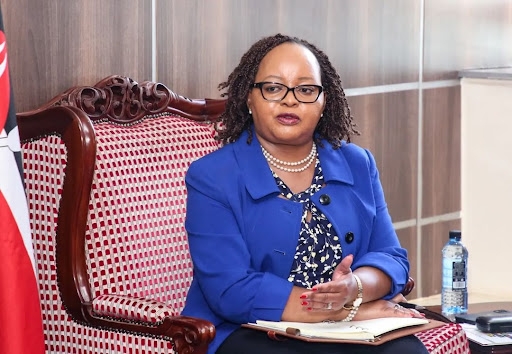Some communities in the country have started agitating for the return of cultural heritage stolen during the pre-colonial era.
The communities include the Nandi, Maasai and Pokomo.
Already, the Africa Union has urged states to take steps to put to an end to the pillage and illicit trafficking of African cultural property and ensure that such cultural property is returned to their countries of origin.
The AU has also tasked states to take the necessary measures to ensure that archives and other historical records illicitly removed from Africa are returned to African governments.
This would help them to have complete archives concerning the history of their countries.
Once such stolen cultural heritage is returned, Africa states must commit to provide appropriate physical and environmental conditions to safeguard them.
The African states must also ratify the Convention for the Protection of Cultural Property in the Event of Armed Conflict and the Convention for the Safeguard of the Intangible Cultural Heritage.
National Museums of Kenya senior research scientist Purity Kiura told the Star there are a number of artifacts belonging to countries such as Kenya in foreign museums.
Kiura said such cultural heritage must undergo restitution, repatriation or reparation.
“Restitution is the return of stolen or illegally taken away cultural resources to individuals or communities,” she said.
“While repatriation is the return of cultural resources to a nation or state at the request of the government or through force.”
She added that reparation is the action of making amends for the wrongful removal or loot of cultural resources from their rightful owners.
Kiura said traders and tourists carted away Kenya’s cultural heritage before donating them to cultural institutions in their home countries.
Others left the country through direct military interventions in the 1880s to 1963, religious conversions at the begging of 20th century, change in legislation, academic researchers and memorabilia and gifts.
Kiura said wood carvings belonging to the Mijikenda community to honour their deceased were stolen in the 1970s and 80s.
“The carvings were out of termite-resistant hardwood. Two of the nine Mijikenda tribes carved vigango. Four hundred were donated to US museums,” Kiura said.
Kiura was speaking on Thursday at the National Museums of Kenya during the opening of the third and final module of this year’s ‘TheMuseumsLab’.
Titled 'Museums of the Future: Embracing Diversity and Sustainability in Nairobi', the two-week module offers a platform for professional exchanges between local and visiting curators, researchers and executives.
Participants were drawn from museums, galleries and heritage sites across African and European countries.
The module seeks to address issues related to the challenges of embracing diversity and sustainability in museums.
This is in light of emerging issues, such as inclusivity, decolonisation and global challenges, such as the impact of Covid-19 and climate change.
Participants explored how museums have evolved from passive collectors and exhibitors to dynamic places of learning, engagement and inspiration.
Kiura said 30 of such carvings are in Denver museum, 37 in Illinois state museum, 18 in Indianapolis museum of art, 18 in Wyaming University museum, and 30 in California state museum Fullerton.
An anthropologist known as Dr Monica Udvardy from the University of Kentucky visited the country in 1985 to undertake field research and to understand how the people of Mijikenda lived and their association with carvings and statutes.
She came across a wood carver while at the Coast and decided to take a photo of him and his work in 1983 in remembrance of two of his brothers who had died.
Udvardy went back to the carver after some months to deliver the photos, only to find out that the two carvings had vanished.
The carvings were later traced to in Illinois state museum in 1999.
Kiura said there are two ways that the German government has supported the country to ensure that stolen heritage is returned.
She said the invisible inventory programme that is seeking to identify Kenyan cultural collections held outside the country is one of the programmes supported by the German government.
“It brought together different parties, collectors, museums from Kenya, France and Germany,” Kiura says.
"The inventories were to achieve a database of about 32,000 objects, which are stored in 30 institutions worldwide, including Germany."
The database serves as a tool to make Kenya’s heritage accessible for researchers and stakeholders globally and allow Kenyan communities to quickly locate their cultural heritage.
The German Embassy has called for 46 human remains from the Coast of Kenya, and particularly Lamu, to be brought back.
Kiura said the subject of remains is very emotive, especially when it is related to the Islamic religion.
“There is a need to engage communities to know where these human remains came from and to understand what they want moving forward,” Kiura said.
German Ambassador Sebastian Groth, who termed the matter ‘sensitive, political and religious’, had announced that plans are underway to engage the affected communities.
Scientists have been conducting research to identify the descendants of the said skulls.
Kiura said in around 2007, Kenya also returned hundreds of thousands of paleontological collections which were stored at the museum for the Tanzanian people.
The collection, she said, had been brought in the 1970s and 1980s, when they were excavated in Olduvai Gorge and other places in Tanzania.
At that time, Tanzania did not have a storage facilities and Kenya agreed to store this collections for them.
Kiura said a private collector a couple of months ago wrote to NMK and sent photographs of some of the collections, claiming that he brought them from Kenya in the 1970s and wanted to return them.
What is recorded in the letter that the museum received indicated that the collections belong to the Maasai.
Upon closer look, however, most of the artifacts are Kamba collections.
Kiura said communities such as the Nandi have been agitating to ensure that their cultural heritage has been returned.
“The Nandi community has requested for the return of human remains, particularly the head of one of the chiefs, spiritual and military leader Koitalel arap Samoei,” Kiura said.
“It is believed that his head or the remains of this particular leader is somewhere in the UK because he was assassinated in 1905 during the colonial rule.”
Samoei is one of the leaders from the Nandi community who were opposed to colonial rule.
Kiura said three sticks, which are believed to be associated with Samoei, were returned in 2006.
“The sticks represented his spiritual role, another one represented military role and the other one political role,” she said.
The Pokomo community has also been adamant that their famous drum, known as the ngadji, be returned.
The community says their drum, which is the source of power and pride for the Pokomo, has been relegated to a storage room in the British Museum in London for 111 years.
The drum, which was taken in the 1980s, is believed to be central to spiritual and communal life before it was stolen by British colonialists.
Kiura said the Maasai community have also been agitating for the protection of their cultural heritage.
In 2017, some Maasai cultural leaders identified Maasai objects, which they believe are associated with their traditions.
They requested that the objects should not be displayed in the museums or they should not be researched.
However, there are more than 100,000 Maasai objects in these museums.











